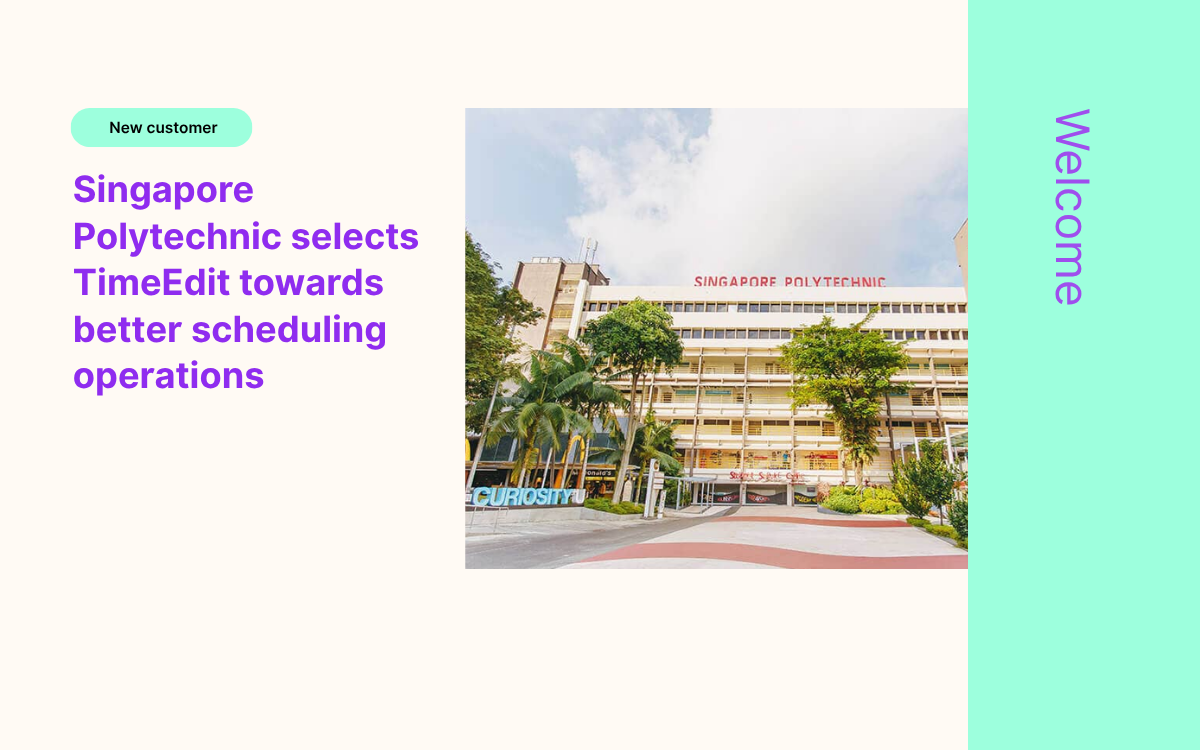The Big Shift
So what are the main developments since SU started using TimeEdit some 20 years ago? At that time, TE was purchased to meet a specific need for a room booking tool, without a real holistic approach to scheduling or resource management. The shift to an holistic approach was made around 2016, when the decision was made to start using TE as the scheduling and resource management tool for the whole university. An evaluation revealed that a lot of the room bookings were not realised, and as a result of this the cost was unnecessarily high. This was an important step to increase efficiency in resource management and maximise the usage of the rooms available, and at the same time manage the scheduling process in a unified way.
What effect has the holistic approach to resource management had?
Nowadays, while the Property Management Office is centralised, the approximately 200 schedulers are based out of the institutions. So how does the resource management work in practice with this mix of centralised and decentralised set up? Carlos tells us:
“Most rooms are centrally managed from the Property Management Office, and for those we have release dates when all institutions are free to book the rooms at an hourly rate. When the clock strikes, there is quite the frenzy for the most popular rooms and time slots. There are also some rooms that are wholly rented by each institution, meaning that they pay a monthly fee independently of usage. These room bookings are nevertheless also booked via TE.”
Benefits of the shift
So what would Carlos say are the biggest benefits of using TimeEdit this way? “It is in three words efficient, transparent and uniform. All the institutions use the same system and are charged according to usage. We can clearly see that the rooms are more efficiently used when you pay by the hour and according to room size compared to the rooms “owned” by each institution. Usage of the centrally managed rooms is somewhere around 60-65% in office hours, meanwhile the institution managed ones have a corresponding rate of 50% at best. ” He continues: “We can also see big benefits with everyone having a clear overview of what resources are available and which bookings a certain institution has. As the hourly rate of each room varies according to the number of seats, we see that the institutions are aware of this and do not book unnecessarily big rooms. We also see that the staff like being closer to the actual scheduling, and this approach also makes the scheduling more student centric. New areas of use also come up all the time, for instance we are now also using TE for booking exhibition hosts for our art gallery.”
“Add to this the benefits of all students being able to book smaller group rooms themselves TE Viewer. This is an easy way for the students to know availability and book according to their own needs and of course takes away a lot of administration.”
“It is in three words efficient, transparent and uniform."
Next steps
So what does Stockholm University see as the next steps for becoming even more efficient in the future? Carlos tells us: “We see great opportunities for improving our daily business even further. We might be looking into using real time occupancy data from wifi/sensors for better decision making, and we are very much looking forward to functionality being built into TE Exam to be able to invoice exam-related services straight from the system. Further into the future, we are discussing centralising the scheduling process through the establishment of a central scheduling organisation for the whole university. By doing this, we believe that we will get more value from our TE system and use it more efficiently - as well as making it easier to optimise the spaces and resources we have at the university.”
Image: ©Stockholm University, photographer Niklas Björling





.png)

.png)
.png)
